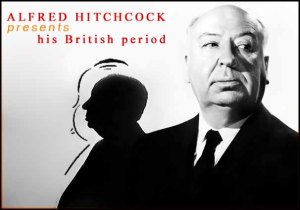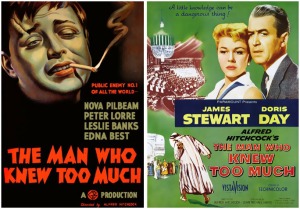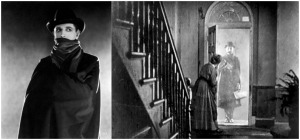A l’occasion de la sortie française du film Hitchcock il y a quelques semaines, nous avons voulu revenir sur la carrière du « maître du suspens » anglais. L’œuvre du réalisateur est colossale, puisqu’il nous a laissé pas moins de 53 longs métrages. Toutefois, si sa période anglaise, qui dura de 1922 à 1939, est connue des cinéphiles avertis, elle n’en reste pas moins ignorée du grand public.
***
By the time of his death in California in 1980, Alfred Hitchcock was such a celebrity in America, such an instantly-recognizable popular icon for his Hollywood film and his cameos (each time he appeared in his films) that the strength of his British roots were almost completely forgotten. And yet it was not until 1939 that he crossed the Atlantic at the age of 40, and by then he had directed more than 20 films for British companies.
A new generation of critics who celebrated his Hollywood films often disliked his British productions. How could one value modest craft and quirky humour above the profundities of films like Psycho or Vertigo? Today the public knows significantly more about the second part of Hitchcock’s career. Moreover opinions are often divided. Some, like French filmmaker François Truffaut, think that Hitchcock was limited by the British cinema and that his genius could only truly bloom in Hollywood. It was easier to disparage his British films as the minor works of an apprentice when most of these works were so rarely shown (some movies from this period have even disappeared!). Gradually as Hitchcock’s British films have become more accessible through TV screenings, retrospectives, academic courses and increasingly video on demand, the balance has shifted. Many of his British films are now said to have the same kind of force and complexity as his best Hollywood works, which is why it is sometimes believed that he perfected his technique and created his own style in Britain.
The British period is a sort of learning period, which announces his big American movies. Even if some scenes can be awkward, the audience enthused over them while his American period is considered by some connoisseurs, like actor and director Orson Welles, cold and sharp. From 1922 to 1939, script was more important than direction. Hitch learned how to use sound with Blackmail (the first talky in Britain).
You can easily see the differences between the two periods by looking at the two Man who knew too much posters below:
These movies are interesting because Hitchcock produced the first in 1934 in Britain and the second in 1956 in the USA. Seeing these two posters nobody could guess that there is only one story. The British poster looks like a horror movie while the American one looks like a glamourous love and action movie. In fact the British period is a lab of youth experiments, in which one can see all the things hidden in the American period.
Hitchcock knew his first big success during the English period. The Lodger, his third movie was a great success in Britain. It is also often regarded as the first real ‘Hitchcockian’ film. One can find some typical elements of Hitchcockian cinema. Indeed in this really personal film, the idea of the wrong man and the theme of the stairwell appeared. At the end of the thirties, Hitchcock was at the height of his talent.
Today we are born in a world of special effects and 3D. It is easy to understand why silent British films are unknown. Only real movie fans enjoy these movies and the rest of us may never appreciate the true worth of Hitchcock’s British period. Why not seize this opportunity to discover it now? The Lodger ; Downhill.
Léonor WEJMAN, Emmanuelle SIMONET & Jade BARRE


